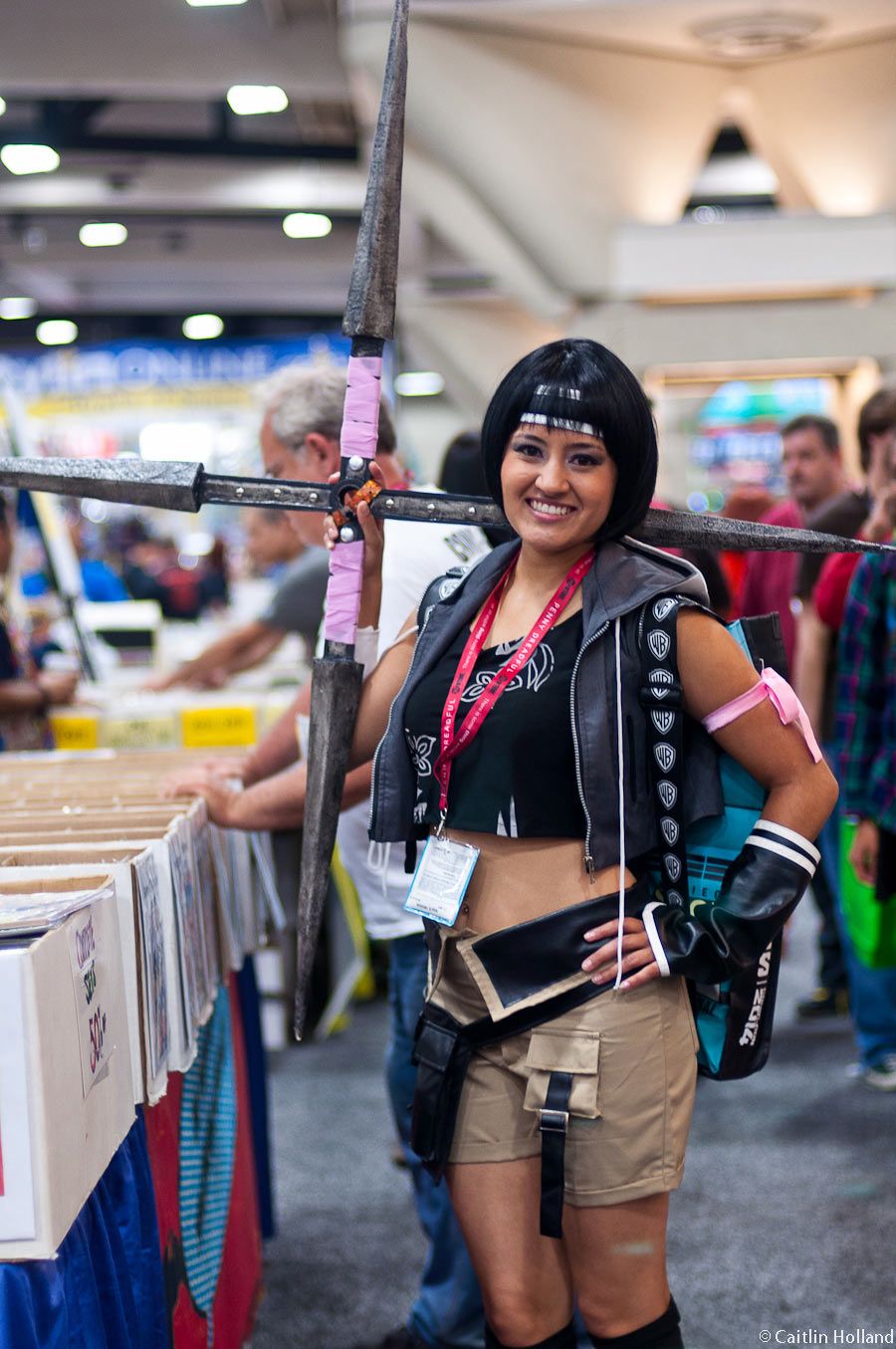Writer and producer Denise Dorman, wife of artist Dave Dorman, kicked off far-ranging discussion with her recent post about the shifting convention scene, and how it's affected their income -- specifically, her view that cosplayers have become to the "new focus" of the events, to the detriment of creators, publishers and vendors.
It's certainly true that comics conventions have become more popular and more numerous than ever, and with their success comes an evolving experience both for attendees and exhibitors. However, Dorman's essay is front-loaded with a lot of perplexed annoyance at kids today and their cosplaying, Instagram and selfies.
Unfortunately, much of the discussion that's followed so far has focused on defending cosplayers. That was my initial response too -- after all, I've seen some people wearing elaborate and imaginative costumes walking on the floor with their overflowing bag of comics, or their original art delicately being transported somewhere safe. Plenty of cosplayers love comics, and if they stop at a booth, you can bet people around them are checking out both them and the table they're perusing. I've seen it happen so often at Comic-Con International.
"Oh, but they've never been so disruptive," hypothetical person protests. And yet, in 1972, cartoonist Scott Shaw! cosplayed as The Turd by covering himself in peanut butter, which of course got everywhere, even destroying the hotel's pluming. And as Shaw! mentions in the video below recounting the amazing story, even back then, people would create amazingly elaborate costumes. Talk about pulling attention away from exhibitors!
Cosplaying is nothing new. It continues to be hilarious, stunning, imaginative and frequently provocative, and the participants have always been a big part of the con experience. What's different about cosplayers is how they're being celebrated now more than ever. And why is that?
As fans and creators of comic books, we should know more than most anyone that people respond to visuals; the human brain processes visual information 60,000 times faster than text. Just as tourists have done for decades, we like to capture visually memorable sights and experiences with cameras. The technology to do this has never been better, more readily available or more affordable. Digital cameras, especially those in phones and other small devices, make it easier to quickly capture something unique -- and you can bet that at comic conventions, you'll see just that. Yes, you'll see art, you'll see creators, and you'll people in unexpected costumes walking around the exhibition floor. There's a surprise and a delight to stumbling on the 501st Legion, or walking past the most amazing Hulk Buster Iron Man costume. So yes, photos are going to be taken.
The frustration for creators and exhibitors is that all of those people clustering around that Iron Man cosplayer aren't stopping by their tables (or maybe they're even holding up traffic in already-congested aisles). But is that temporary moment of distraction really driving the revenue away? That might cause a few potential customers to wander off, but I don't quite believe that if those cosplayers weren't stopping there, customers would be flooding in.
The real issue is the question Dorman asks toward the end of her post: "Have the expenses of dressing up, rising ticket prices, price gouged hotels, and parking costs to attend these costly conventions made it financially unfeasible for people to actually spend money on exhibitors anymore?"
The truth is that there has been a consistent number of exhibitors, both creators and vendors, reporting a loss at conventions, where before it was worthwhile, even lucrative. Why is that happening? Is it the majority? Or is the shifting landscape of the comics industry leaving behind the old guard, and the old business models, and a new generation of exhibitors are walking away from conventions with a strong financial incentive to return?
Without more information, it's difficult to know. Maybe the big conventions have diversified and multiplied to such an extent that there aren't enough comic fans attending each one. Or maybe comics is growing so big that fans who do attend are simply spread out among more creators. I suspect a lot of collectors are moving to the smaller conventions, where comics are the focus. The pop-culture extravaganza market is pretty well cornered between Wizard World, ReedPOP and Comic-Con International. Audiences are becoming more segmented with the almost infinite choices in entertainment. Perhaps the move is to hunker down on comics-focused conventions.
I don't have the answers, but the questions need to be asked, and they need to trigger more questions. After spending decades hidden away, comics are on the world stage now. That's bringing a lot of people to our world. Some will actually read the comics, and some are just interested in the products and entertainment that have spun out of them. Our next challenge is to find new ways to engage with both of those types instead of relying on old tricks and then being confused when they don't work.


